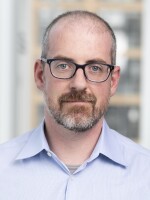As U.S. clocks shift forward this weekend, many earthlings will find themselves momentarily confused about what time it is. But scientists say a far larger temporal problem is looming on the horizon: With multiple missions to the moon in the planning phase, it's time to set a Lunar time standard.
"We need to define a time on the moon," says Javier Ventura-Traveset of the European Space Agency (ESA). Without it, Ventura-Traveset warns, docking spacecraft could tumble into each other, astronauts might get lost on the lunar surface, and of course, nobody will know when they can take their lunch break.
When humans first traveled to the moon in the 1960s and 1970s, they didn't worry too much about what time to use, according to Andrew Chaikin, an author and space historian. "They set their watches to Houston time because that's where mission control was," he says. More formally, he adds, the Apollo missions used something called "mission elapsed time," which was a clock that started the second the rocket lifted off from Earth.
But in the decades since those missions, time has taken on a new importance here on Earth.
While nations set their times according to their position on our rotating ball of rock, all time zones globally are defined against single Coordinated Universal Time (UTC). UTC is set by the International Bureau of Weights and Measures in Paris, France. It's created using an ensemble of atomic clocks all over the globe: they feed their times into the Parisian central laboratory, thereby ensuring that every nation ticks in synchrony to within a tiny fraction of a second.
In our modern world, that timing is essential to keeping computer networks humming and markets trading. Perhaps most importantly, time is the cornerstone of the world's global navigation systems.
Satellites – like those used for GPS – send time signals down to Earth. Because those signals arrive a fraction of a second later than the current time on the ground, the time difference can be used to determine a person's position on the planet's surface to astonishing accuracy.
Ventura-Traveset is part of a European effort to create a GPS-like system for the moon. Known as "Moonlight," the system would use a small number of satellites to create a communications and navigation network around a crewed landing site on the lunar surface.
But for it to work, both the landing site and the satellites need to know what time it is.
Currently, lunar missions use UTC like everyone else, and that might seem like the simplest solution, Ventura-Traveset says. But in fact, he believes it'll be tricky to use UTC on the moon. Part of the problem is the sheer distance between Earth and the moon, which means a timing signal from Earth would take over a second to get from earth to the moon – an eternity by the standards of today's atomic clocks.
But there's an even more fundamental problem: Einstein's theory of relativity states that time actually ticks differently in different parts of space. Specifically, the moon's lower gravity and its motion relative to Earth cause time to pass around 56 microseconds faster each earth day.
This 56 microseconds is not some abstract concept: Every day, astronauts living on the moon will age 56 microseconds more quickly than they will on Earth. That's far too small a time gap to make a difference in a human lifespan, but for navigation, that kind of time difference is enormous, Ventura-Traveset says.
To get accurate positions, "you need the level of nanoseconds," he says. In other words, the different rate of time flow on the moon means that clocks on the lunar surface cannot simply be run from Earth. Instead, he thinks a set of lunar clocks will need to be created that keep a special "moon" time.
Given the moon's proximity to Earth, Ventura-Traveset thinks that it may make sense to use some additional calculations to keep lunar time in sync with UTC, to give the illusion of continuity between the Earth and the moon. But as humans explore further into the solar system, he believes it will be necessary to create completely separate timescales. "If you are on Mars, or you are even farther away, probably you have your own time," he says.
ESA is working with NASA to figure out how to create standards for communications and navigation on the moon. In a statement, NASA told NPR that "subject matter experts throughout the international community are discussing an approach to provide recommendations to the International Astronomical Union for lunar reference frame and time systems."
Ventura-Traveset hopes ESA's proposal for a separate lunar time will ultimately be accepted by other space agencies around the world. "It's fascinating times," he muses.
Copyright 2023 NPR. To see more, visit https://www.npr.org.



